Many of my friends have been to the Aga Khan Museum for concerts, lectures, and other events. They have also visited the collection there. All the reports I heard were good so I decided it was time for me to make the trek to Don Mills. I was curious to see what they were talking about. The location is out of Toronto’s city core but there would have been no space in the City for the concept to have been realized architecturally. It’s very impressive and I particularly like the Ismaili Centre which has the glass pyramid and I also like the beautiful, peaceful gardens around the site. The Ismaili Centre was not open for viewing the day I was there. I haven’t been doing collages very much lately but I am sharing some of the pictures I took there with you.
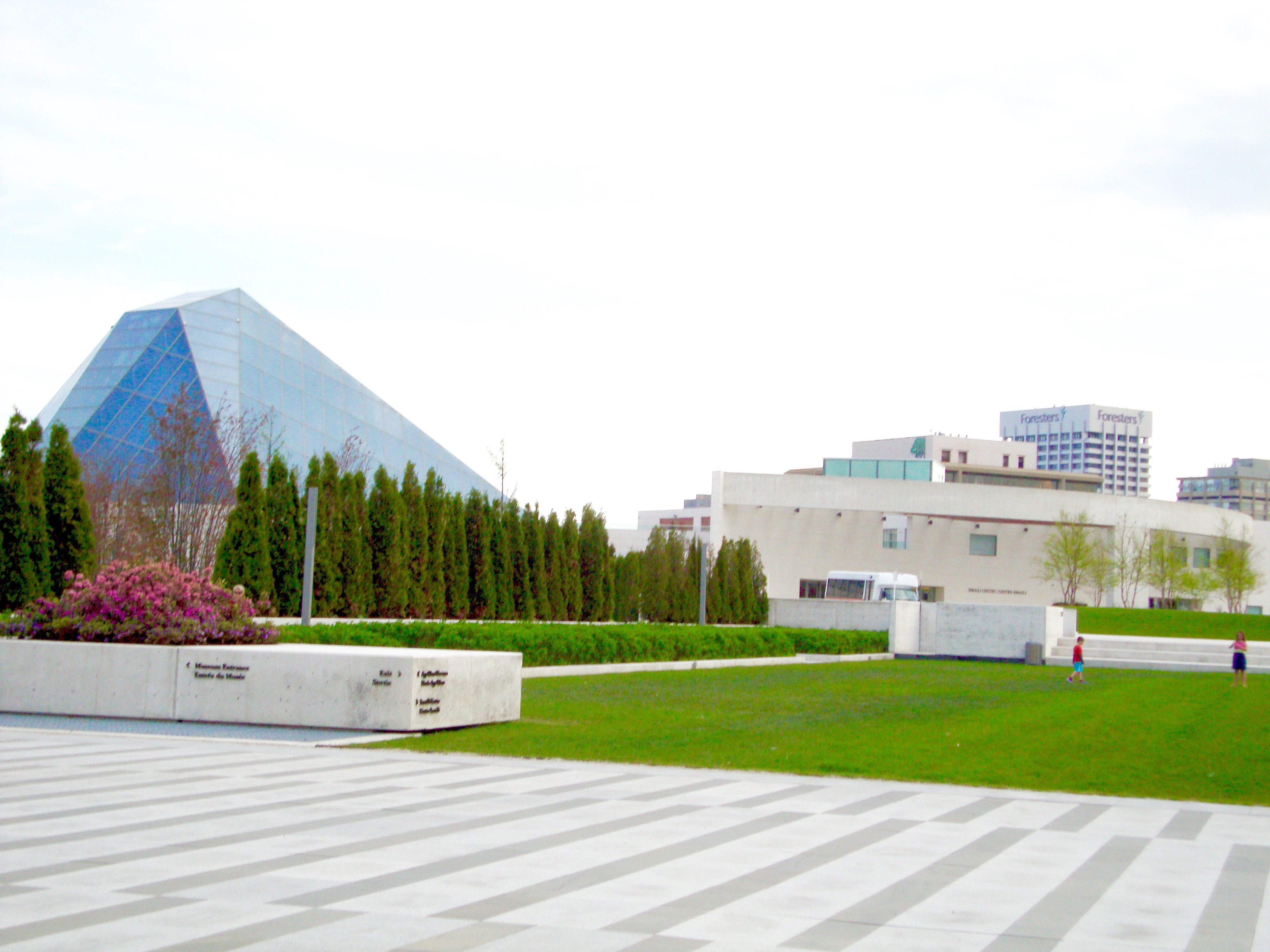
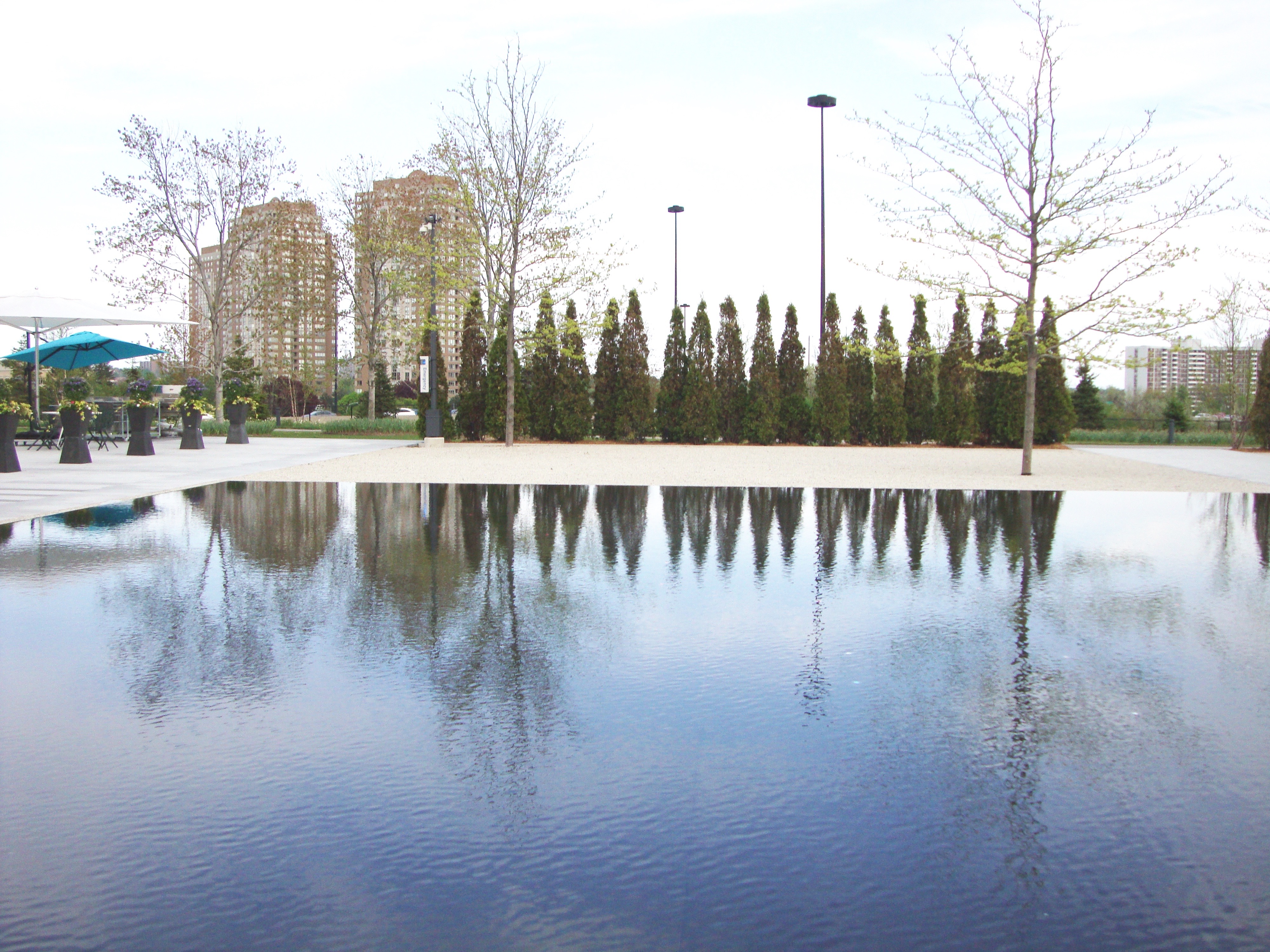
The monetary cost of building this was to the tune of about $300 million. Since I knew very little about The Aga Khan, I decided to find out who he is. His biography is very impressive. His Highness the Aga Khan, the founder and chairman of the Aga Khan Development Network (AKDN), is the 49th hereditary Imam (Spiritual Leader) of the Shia Imami Ismaili Muslims. For His Highness the Aga Khan, one manifestation of his hereditary responsibilities has been a deep engagement with development for over 50 years. Son of Prince Aly Khan and Princess Tajuddawlah Aly Khan, the Aga Khan was born on 13 December 1936, in Geneva. He spent his early childhood in Nairobi, Kenya, and then attended Le Rosey School in Switzerland. He graduated from Harvard University in 1959 with a BA Honors Degree in Islamic history. He became Imam (spiritual leader) of the Shia Imami Ismaili Muslims on 11 July 1957 at the age of 20, succeeding his grandfather, Sir Sultan Mahomed Shah Aga Khan. As spiritual leader, the Aga Khan has emphasised the view of Islam as a thinking, spiritual faith: one that teaches compassion and tolerance and that upholds the dignity of man, Allah’s noblest creation. (www.akdn.org) The Aga Khan was in Toronto last May for the opening of the park.
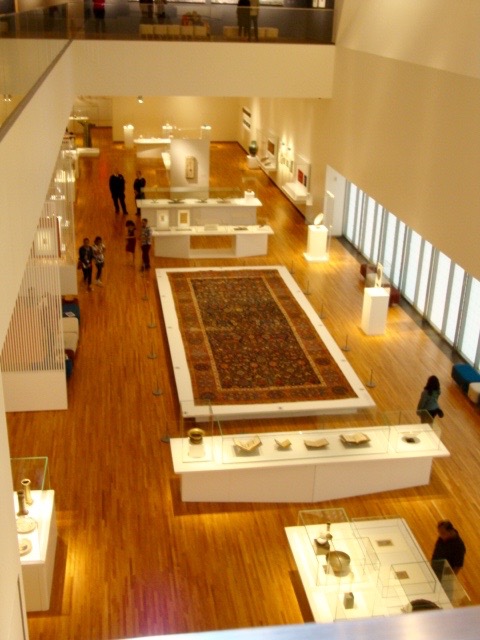
There’s a photographic exhibit on one part of the upper level called “Images of Istanbul” and the image below was taken while I was on that level. You can really get a sense of the “boxy” effect inside on the lower level of the Museum – and a sense of what the interior is like. There was a huge carpet (as you can see) on display and this is what the blurb about it said: This carpet ranks among the greatest masterpieces of Iranian design produced in the royal “House of the Book” (Ketabkhaneh) under Shah Tahmasp (1524-1576). The main field depicts the world as a royal garden fit for “paradisiac” ceremonies. At the bottom stags stand on either side of a blossoming tree and look up at confronted peacocks. It was beautiful and it took time to see all the detail – nothing like my own rug at home.
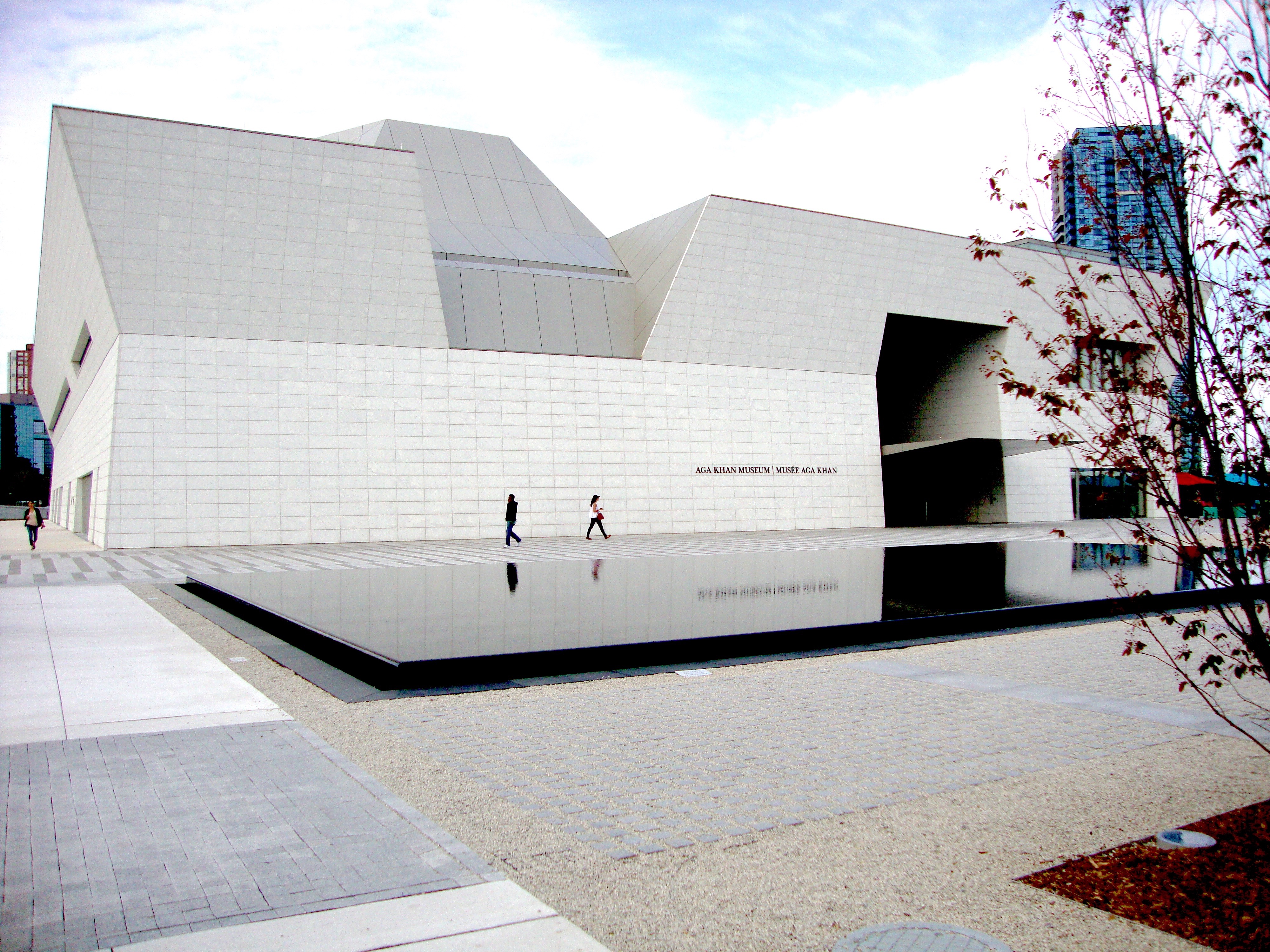
The 10,000 square-metre structure is set within formal gardens and surrounded by a large park (Aga Khan Park) designed by landscape architect Vladimir Djurovic. The extensive site is shared with a new Ismaili Centre designed by the Indian architect Charles Correa. (Wiki)
Just a few more photos below and information about the key people on the project. The information right below is about the interior of the Ismaili Centre. I would love to go back for a tour of the interior.
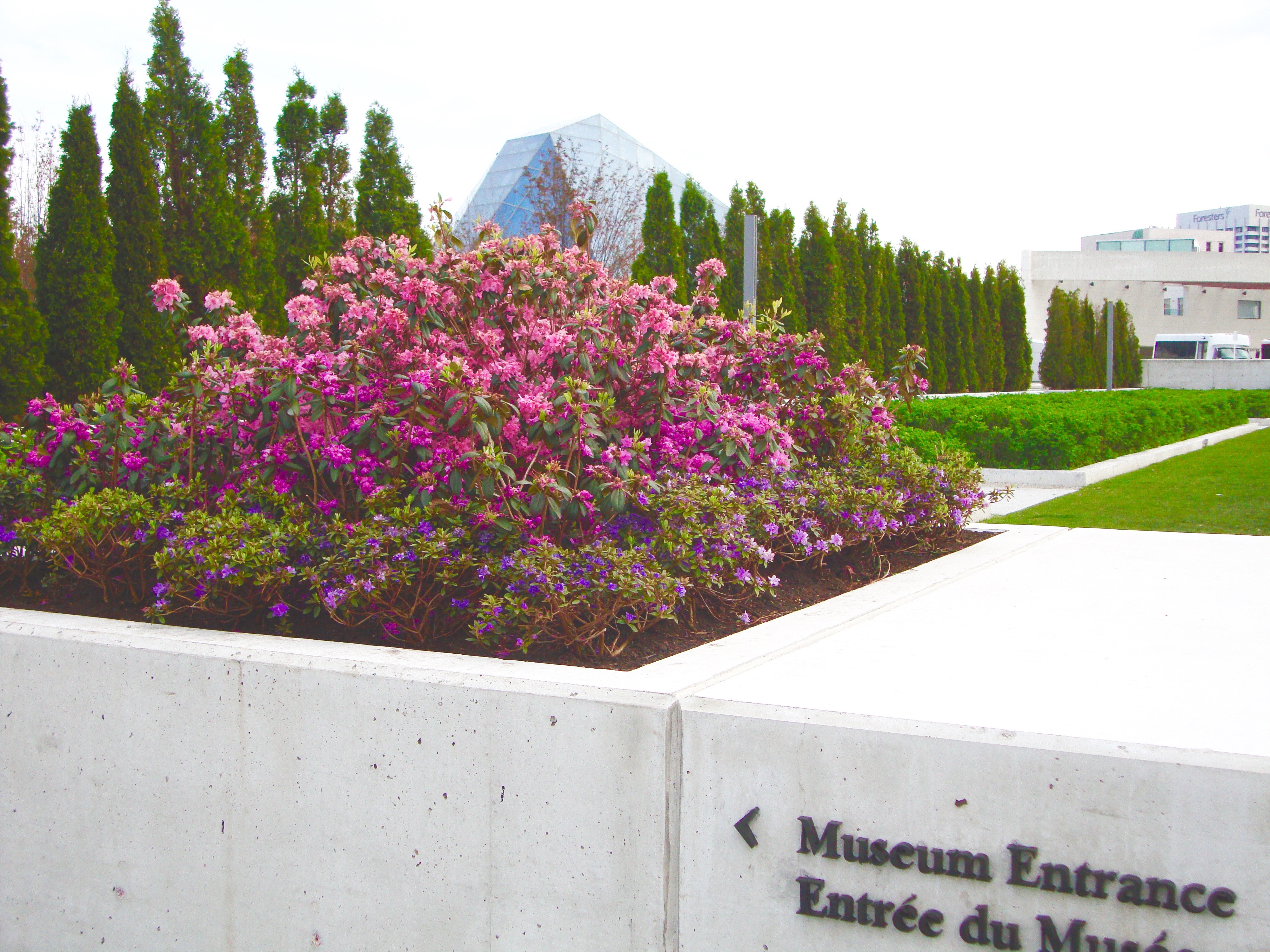
‘…transparent walls etched with a motif of Hassam’s own design, based on a fractal pattern inspired by the geometries of Correa’s prayer hall dome. The pattern is repeated on the stone floors, carpeting and screens; the composition of stars and circles alludes to both celestial divinity and earthly inclusivity’
Matthew Hague
(arrizandco.com)
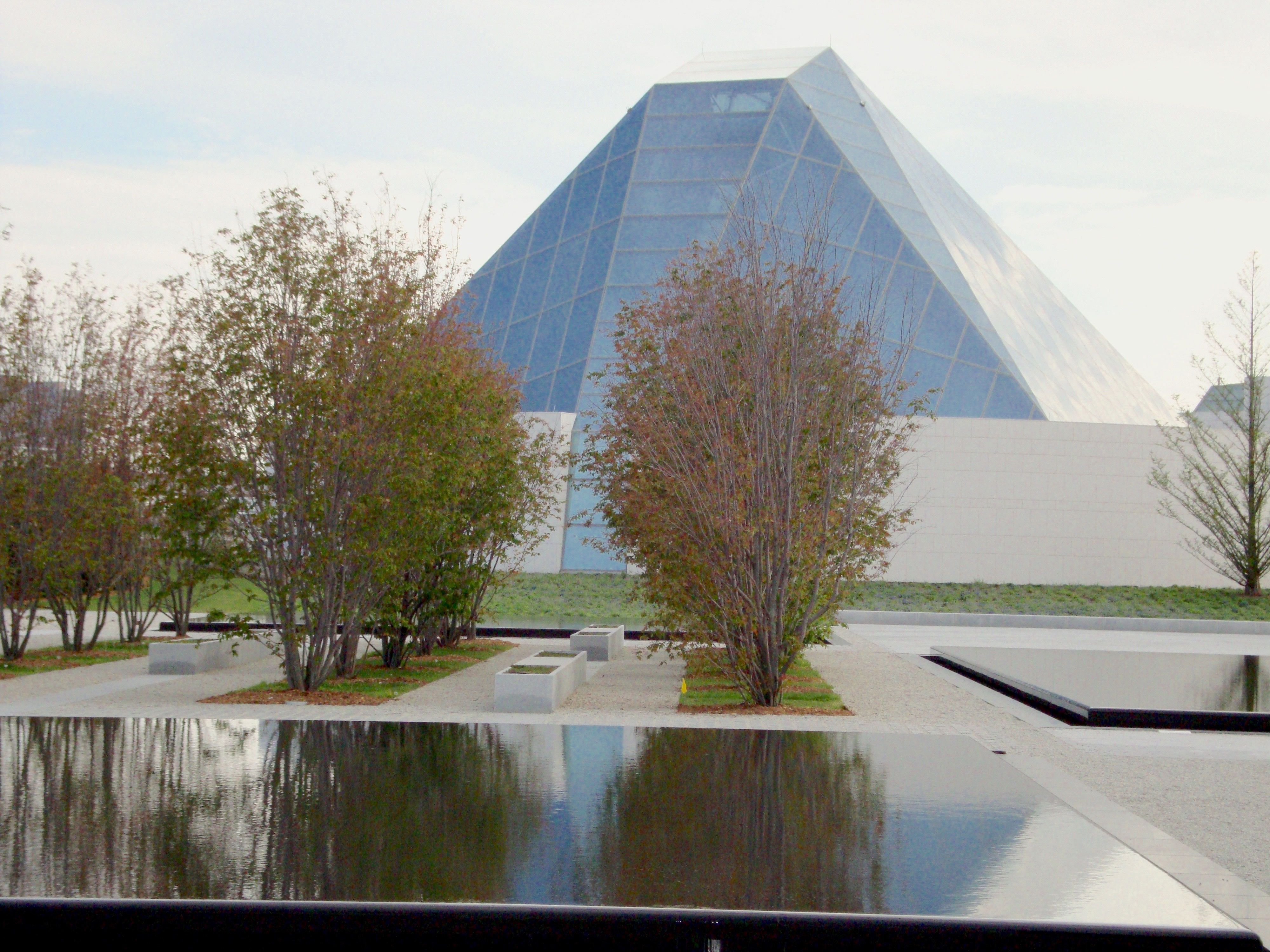
The gardens surrounding Humayun’s Tomb proved to be an important source of inspiration. Recently restored by the Aga Khan Trust for Culture and the Archaeological Survey of India, the quintessential Mughal garden tomb is arranged in a chahar-bagh (four-part) layout that divides the landscape into quarters, which are further subdivided. Each section is separated by raised causeways, with water channels and octagonal or rectangular pools marking the intersections.
Djurovic stresses that while these and other gardens were influential, the Aga Khan Park does not seek to replicate them. “We are in Toronto, we are in the West, in the snow… our main challenge was to try and abstract.” The components of successful gardens are not found in the shapes or forms, he says, but rather in the essence.
The formal elements of the Park capture this essence in their symmetry, geometry and the sensations they create — for example from walking on the loose gravel or the scent of the fruit trees. “And you have the mirrors of water,” says Djurovic. “Water is the main element of an Islamic garden.”
“But here we use them in a very contemporary way,” he explains. The shallow black pools become mirrors that “reflect the dome of the Ismaili Centre prayer hall and the Museum. So you have the culture and the religion and everything is in that garden.”
Between the reflective pools, the soft gravel and the local serviceberry trees, no defining component of the park stands out to Djurovic. “It’s the relationship of everything,” he points out — “it’s what you will feel when everything is right and everything is working together.”
Like so many of the Islamic gardens he toured at the start of his design process, Vladimir Djurovic hopes that the Aga Khan Park will continue to be relevant a century from now. “We’re growing, everything is changing, everything is more contemporary, more modern,” he says, “but the fundamentals are the same.”
“Feeling you are part of a private place, your own sanctuary, in the middle of nature, and berry trees attracting the birds… that will always stay, now and forever.” (theismaili.org)
I hope you’re really getting a sense of what this place is all about from the photos and the information I found. It would have been fine to have just visited and then forgotten about the place. However, as my interest was peaked to find out more about the Aga Khan and the Museum, there’s a lot I am learning through this process. My last image (below) is of a part of the outdoor restaurant where I would like to go back and dine someday. I had coffee and a muffin at the indoor snack/tea area which overlooks a lovely outdoor area with planters. There are chairs and tables in that area but the weather was too cold to sit outside that day.
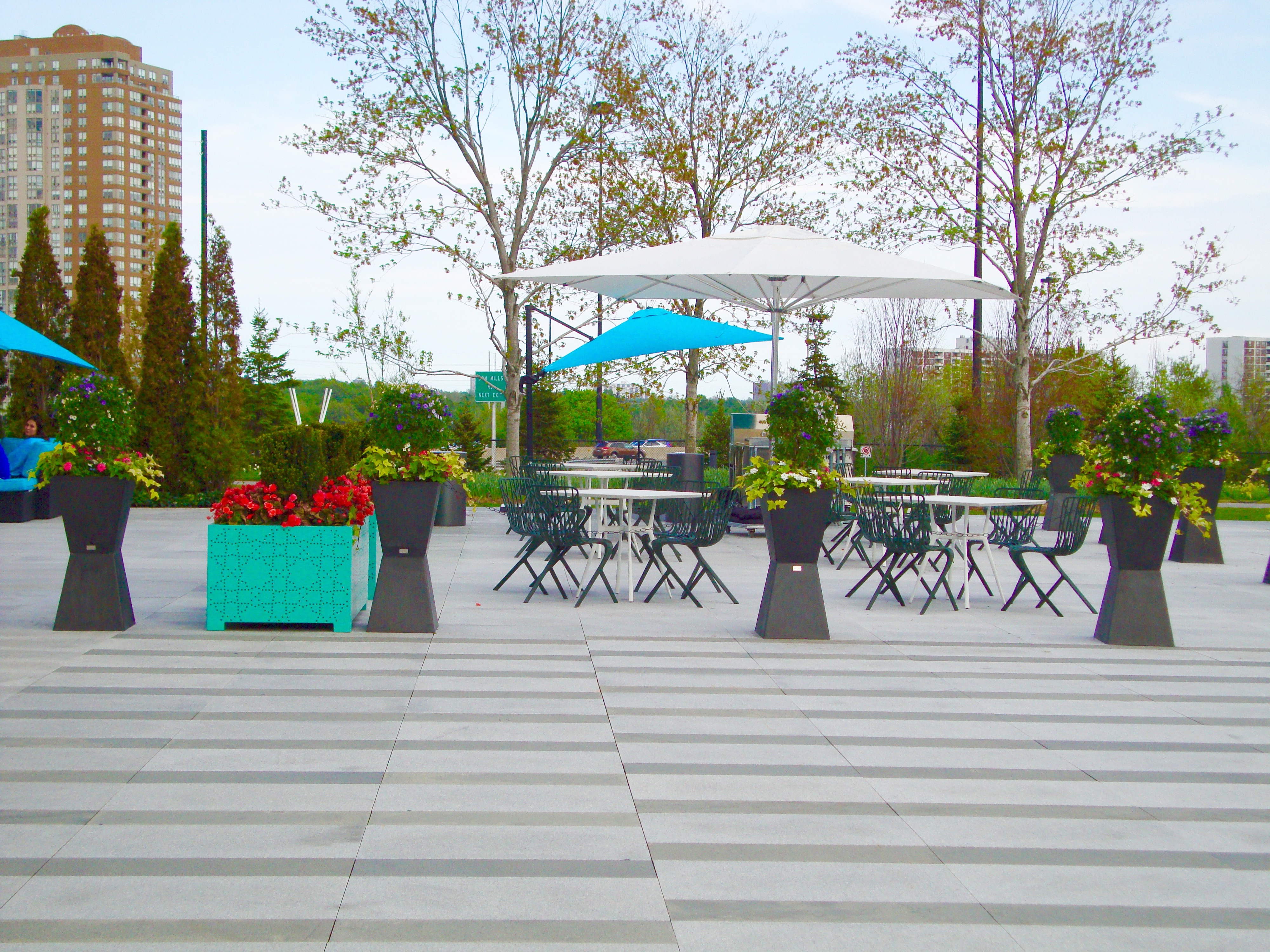
The Aga Khan Museum is a wonderful addition to Toronto’s fine museums and one that highlights the Muslim culture and civilization. Since 911, there has been a culture of disdain and hate towards Muslims throughout the world. Perhaps, this Museum will serve to cast a different light on Muslims and to bring about a better understanding and awareness of the richness of this civilization. Islamic civilization has been around since A.D. 610. Harroon Siddiqui, a well-known columnist wrote in the Toronto Star at the time of the Museum’s opening (Sept. 12/2014): “It represents a historic turning point for Canada — sending a bold political and social message of peace and pluralism to the world at a time of fraught relations between the West and Islam/Muslims.”
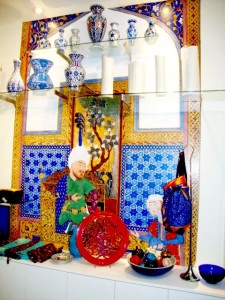
This has been longer than most posts. My next post will show a few items from the collection that I was able to take images of. The Aga Khan Museum is worth a visit for those who are interested in finding out more about the Islamic/Muslim World. I enjoyed my visit there.
NOTE
The interior of the Ismaili Centre was designed mainly by Toronto’s Arriz & Co. Designer Arriz Hassam, an Ismaili whose family arrived in Canada as refugees from Uganda in 1974. He fused Islamic tradition (ornate floors, inset with Turkish and Italian marble) and Canadian maple to craft a serene, spare setting. It reflects, in its details, the Ismaili experience in Canada. (Internet)
